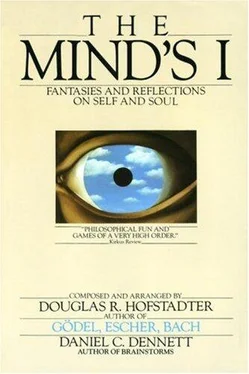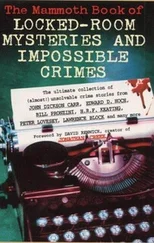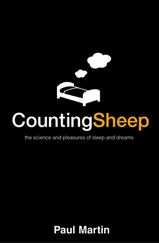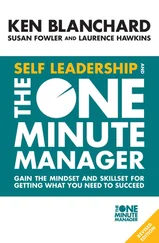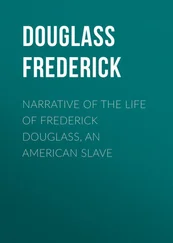ANTEATER: I’m not sure.... It sounds strangely familiar, and yet I can’t quite place it.
ACHILLES: It’s a very simple idea. Pierre de Fermat, a lawyer by vocation but mathematician by avocation, had been reading in his copy of the classic text Arithmetica by Diophantus and came across a page containing the equation
a 2 +b 2 =c 2
He immediately realized that this equation has infinitely many solutions a, b, c, and then wrote in the margin the following notorious comment:
n a+n b=n c
has solutions in positive integers a, b, c, and n only when n = 2 (and then there are infinitely many triplets a, b, c , which satisfy the equation); but there are no solutions for n > 2. I have discovered a truly marvelous proof of this statement, which, unfortunately, is so small that it would be well-nigh invisible if written in the margin.
Ever since that day, some three hundred years ago, mathematicians have been vainly trying to do one of two things: either to prove Fermat’s claim and thereby vindicate Fermat’s reputation, which, although very high, has been somewhat tarnished by skeptics who think he never really found the proof he claimed to have found—or else to refute the claim, by finding a counterexample: a set of four integers a, b, c, and n, with n > 2, which satisfy the equation. Until very recently, every attempt in either direction had met with failure. To be sure, the Theorem has been proven for many specific values of n —in particular, all n up to 125,000.
ANTEATER: Shouldn’t it be called a “Conjecture” rather than a “Theorem,” if it’s never been given a proper proof?
ACHILLES: Strictly speaking, you’re right, but tradition has kept it this way.
CRAB: Has someone at last managed to resolve this celebrated question?
ACHILLES: Indeed! In fact, Mr. Tortoise has done so, and as usual, by a wizardly stroke. He has not only found a proof of Fermat’s Last Theorem (thus justifying its name as well as vindicating Fermat), but also a counterexample, thus showing that the skeptics had good intuition!
CRAB: Oh my gracious! That is a revolutionary discovery.
ANTEATER: But please don’t leave us in suspense. What magical integers are they, that satisfy Fermat’s equation? I’m especially curious about the value of n.
ACHILLES: Oh, horrors! I’m most embarrassed! Can you believe this? I left the values at home on a truly colossal piece of paper. Unfortunately it was too huge to bring along. I wish I had them here to show to you. If it’s of any help to you, I do remember one thing—the value of n is the only positive integer which does not occur anywhere in the continued fraction for π.
CRAB: Oh, what a shame that you don’t have them here. But there’s no reason to doubt what you have told us.
ANTEATER: Anyway, who needs to see n written out decimally? Achilles has just told us how to find it. Well, Mr. T, please accept my hearty felicitations, on the occasion of your epoch-making discovery!
TORTOISE: Thank you. But what I feel is more important than the result itself is the practical use to which my result immediately led.
CRAB: I am dying to hear about it, since I always thought number theory was the Queen of Mathematics—the purest branch of mathematics—the one branch of mathematics which has no applications!
TORTOISE: You’re not the only one with that belief, but in fact it is quite impossible to make a blanket statement about when or how some branch—or even some individual Theorem—of pure mathematics will have important repercussions outside of mathematics. It is quite unpredictable—and this case is a perfect example of that phenomenon.
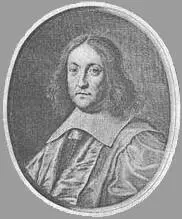
Pierre de Fermat
ACHILLES: Mr. Tortoise’s double-barreled result has created a breakthrough in the field of acoustico-retrieval!
ANTEATER: What is acoustico-retrieval?
ACHILLES: The name tells it all: it is the retrieval of acoustic information from extremely complex sources. A typical task of acoustico-retrieval is to reconstruct the sound which a rock made on plummeting into a lake, from the ripples which spread out over the lake’s surface.
CRAB: Why, that sounds next to impossible!
ACHILLES: Not so. It is actually quite similar to what one’s brain does, when it reconstructs the sound made in the vocal cords of another person from the vibrations transmitted by the eardrum to the fibers in the cochlea.
CRAB: I see. But I still don’t see where number theory enters the picture, or what this all has to do with my new records.
ACHILLES: Well, in the mathematics of acoustico-retrieval, there arise many questions which have to do with the number of solutions of certain Diophantine equations. Now Mr. T has been for years trying to find a way of reconstructing the sounds of Bach playing his harpsichord, which took place over two hundred years ago, from calculations involving the motions of all the molecules in the atmosphere at the present time.
ANTEATER: Surely that is impossible! They are irretrievably gone, gone forever!
ACHILLES: Thus think the naïve … But Mr. T has devoted many years to this problem, and came to the realization that the whole thing hinged on the number of solutions to the equation
a n+b n= c n
in positive integers, with n > 2.
TORTOISE: I could explain, of course, just how this equation arises, but I’m sure it would bore you.
ACHILLES: It turned out that acoustico-retrieval theory predicts that the Bach sounds can be retrieved from the motion of all the molecules in the atmosphere, provided that there exists either at least one solution to the equation—
CRAB: Amazing!
ANTEATER: Fantastic!
TORTOISE: Who would have thought!
ACHILLES: I was about to say, “provided that there exists either such a solution or a proof that there are no solutions!” And therefore, Mr. T, in careful fashion, set about working at both ends of the problem simultaneously. As it turns out, the discovery of the counterexample was the key ingredient to finding the proof, so the one led directly) to the other.
CRAB: How could that be?
TORTOISE: Well, you see, I had shown that the structural layout of any proof of Fermat’s Last Theorem—if one existed—could be described by an elegant formula, which, it so happened, depended on the values of a solution to a certain equation. When I found this second equation, to my surprise it turned out to be the Fermat equation. An amusing accidental relationship between form and content. So when I found the counterexample, all I needed to do was to use those numbers as, a blueprint for constructing my proof that there were no solutions to the equation. Remarkably simple, when you think about it. I can’t imagine why no one had ever found the result before.
ACHILLES: As a result of this unanticipatedly rich mathematical success, Mr. T was able to carry out the acoustico-retrieval which he had so long dreamed of. And Mr. Crab’s present here represents a palpable realization of all this abstract work.
CRAB: Don’t tell me it’s a recording of Bach playing his own works for harpsichord!
ACHILLES: I’m sorry, but I have to, for that is indeed just what it is! This is a set of two records of Johann Sebastian Bach playing all of his Well-Tempered Clavier. Each record contains one of the two volumes of the Well-Tempered Clavier; that is to say, each record contains twenty-four preludes and fugues—one in each major and minor key.
Читать дальше
